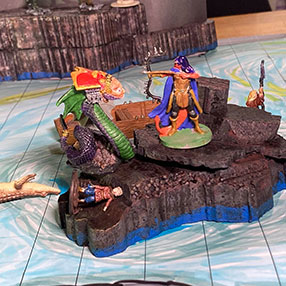el-remmen
Moderator Emeritus
So today I posted an article as part of the Rules Lab feature of the HOW-I-RUN-IT.com site explaining 10 rules I use at my table that help foster dynamic and engaging tactical D&D combat. While the house rules suggestions are mostly geared to play with minis/markers and a grid, I am equally comfortable running TotM style games/combat and use all the same rules when running that way as well. I also know these are not to everyone's style, but at the very least I hope there will be something here that you'll find useful.

 how-i-run-it.com
how-i-run-it.com
The list of 10 rules we use is:
You'll have to read the article for the details of how I run it, but the short version for each is as follows:

Rules Lab: Ten House Rules for More Dynamic 5E Combat
Lively and interesting combat in 5E.
 how-i-run-it.com
how-i-run-it.com
The list of 10 rules we use is:
- Ad Hoc Advantage/Disadvantage.
- Everyone is an Ambusher.
- Flanking.
- Allies, Cover, & Ranged Combat.
- Death Saves Revived.
- Hero Points.
- Ready & Delay.
- Squeezing.
- Diagonal Movement (& Measuring Sticks)
- Minions.
You'll have to read the article for the details of how I run it, but the short version for each is as follows:
- Ad Hoc Advantage/Disadvantage - apply/declare Dis/Advantage based on the detailed circumstances of the combat
- Everyone is an Ambusher - everyone gains Advantage against surprised opponents
- Flanking - just like the DMG option suggests
- Allies, Cover, & Ranged Combat - make shooting into melee potentially perilous forcing more careful positioning
- Death Saves Revived - The Dying condition doesn't necessarily make you unconscious
- Hero Points - mini-inspiration dice everyone gets to accomplish crucial things
- Ready & Delay - stolen from 3E to have a more dynamic initiative that can change.
- Squeezing - sometimes it is okay for more than one character to occupy the same space (though there are penalties)
- Diagonal Movement (& Measuring Sticks) - make sure you count diagonal movement differently than horizontal/vertical movement
- Minions - not quite the 4E version, but simple rules for cutting through lots of mooks and simulating each of them having a different hit point total.
Last edited:
